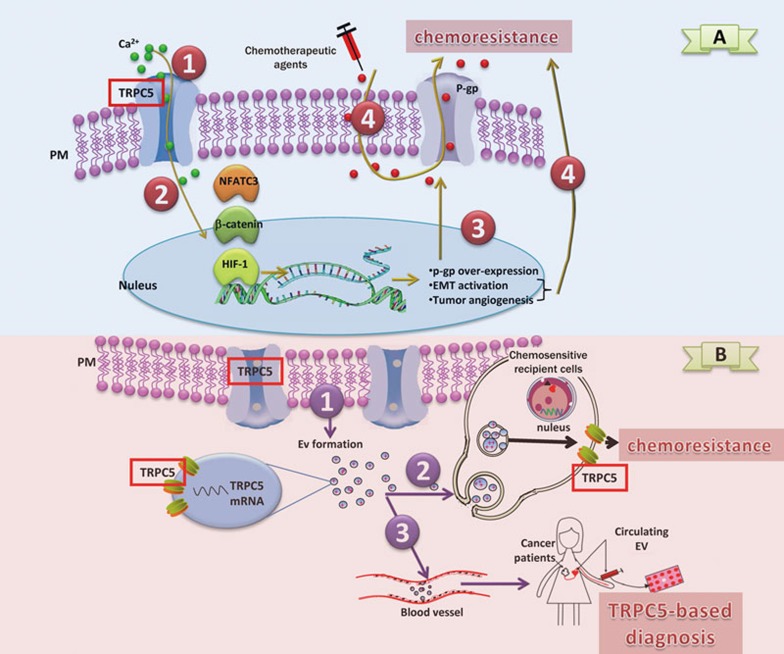Figure 1.
The mechanism of TRPC5 in mediating chemoresistance. (A) TRPC5 mediates the development of chemoresistance. In chemoresistant cancer cells, (1) overexpressed TRPC5 leads to the activation of the Ca2+ signaling pathway. (2) NFATC3, β-catenin, and HIF-1 are activated and lead to (3) p-gp overexpression, EMT pathway activation, and angiogenesis, respectively. (4) Overexpressed p-gp localizes onto the plasma membrane (PM), which can pump out chemotherapeutic drugs, and thus directly induces chemoresistance, EMT pathway activation, and angiogenesis and indirectly induces chemoresistance by modulating apoptosis, metastasis, and other pathways. (B) TRPC5 mediates the spreading of chemoresistance. In chemoresistant cancer cells that overexpress TRPC5, (1) Extracellular vesicles (EVs) are formed with the TRPC5 protein on the EV membrane and TRPC5 mRNA inside the EV. (2) The EVs are transferred to chemosensitive recipient cells, where TRPC5-mediated chemoresistance develops. (3) The EVs spread into the circulating system, and TRPC5 levels in the EV positively correlate with clinical level of chemoresistance. Therefore, TRPC5 levels in the EV represent a diagnostic marker for chemoresistance.

